Driest Cities in the U.S. (Least to Most Rainfall)

From the sun-drenched deserts of the Southwest to the lush, rain-soaked regions of the Gulf Coast, the United States boasts a remarkable range of climates. Some cities bask in perpetual sunshine with minimal rainfall, while others experience frequent downpours that shape their landscapes and lifestyles. Let’s explore the extremes by highlighting the driest and wettest cities in the U.S., starting with those that see the least rainfall.
1. Yuma, Arizona
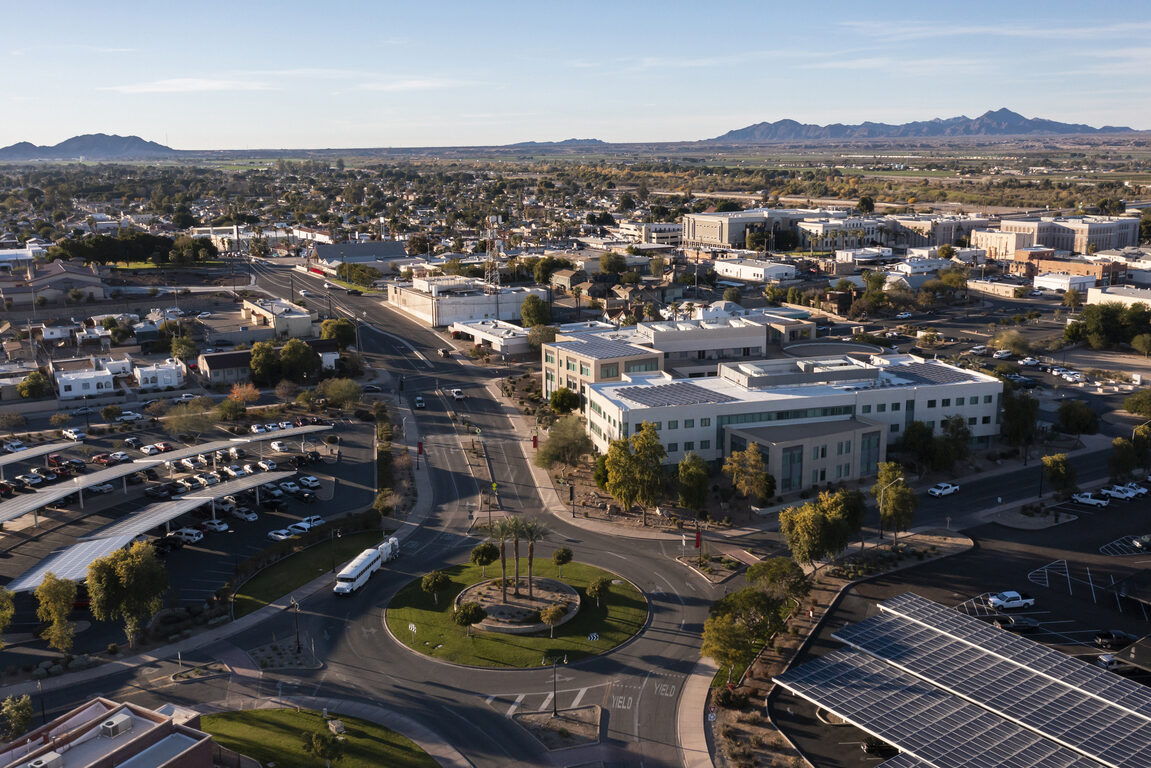
Yuma, Arizona, holds the title for the driest city in the United States, receiving an average annual rainfall of just about 3 inches. This is because Yuma’s average annual rainfall is significantly lower than other U.S. cities, making it exceptionally dry. This desert city is also renowned for its sunshine, boasting approximately 308 sunny days per year.
The combination of minimal rainfall and abundant sunshine makes Yuma a unique destination for those seeking arid conditions. The city’s climate has historical significance as well. In the early days of Yuma, the Pilot Knob Hotel (and other hotels in the area) did offer a free room for every day the sun didn’t shine, highlighting the town’s consistently sunny weather. This was also part of a promotional strategy to emphasize Yuma’s sunny climate and encourage tourism.
2. Las Vegas, Nevada
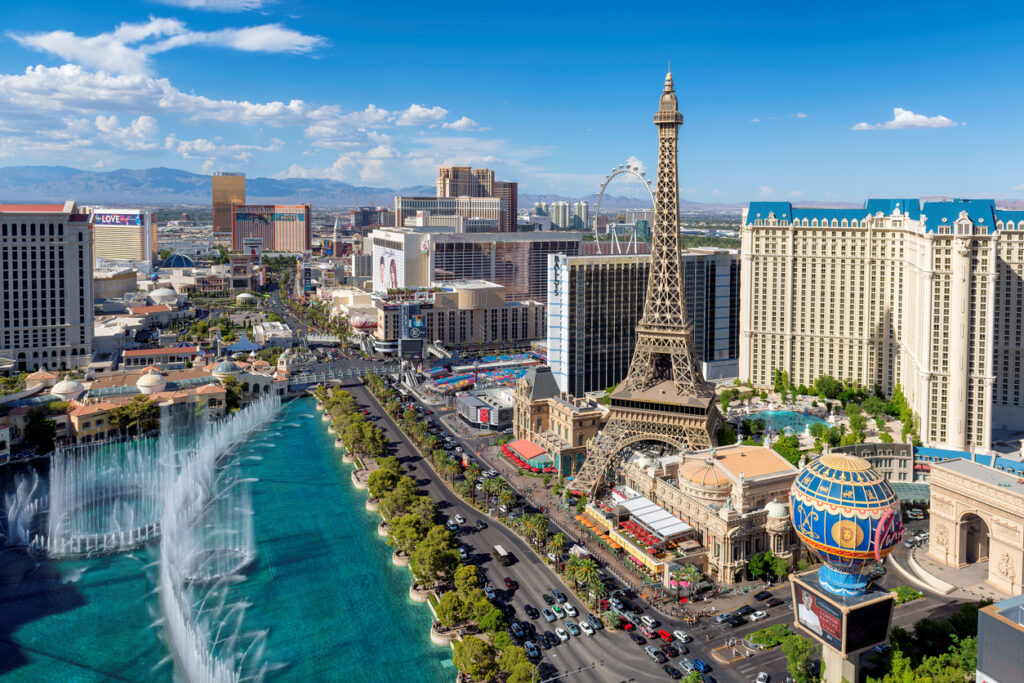
Las Vegas, Nevada, is not only famous for its vibrant entertainment scene but also for its arid climate. The city averages about 4.2 inches of rain annually, making it one of the driest cities in the country. Despite its desert location, Las Vegas experiences occasional intense rainfall events that can lead to flash flooding. These intense storms are often a result of the summer monsoon season, which brings moisture from the Gulf of California.
For instance, in September 2023, heavy rainfall in Las Vegas led to widespread flooding, numerous water rescues, and potentially a death due to drowning. The storm caused flash flooding, submerged vehicles, and forced closures of highways and streets. At least 24 water rescues were conducted by Las Vegas Fire & Rescue, and one death was confirmed, possibly due to drowning.
3. Barstow, California

Barstow, California, a town nestled in the Mojave Desert, experiences an arid climate characterized by hot summers and mild winters. The city receives an average annual precipitation of around 5 inches, making it a desert location with limited rainfall. The limited rainfall in Barstow has implications for water resources and vegetation. Meaning that, the scarcity of water necessitates careful management and conservation efforts to ensure sustainable living conditions. Despite the challenges, the unique desert environment offers a distinct lifestyle for residents and visitors.
4. Phoenix, Arizona
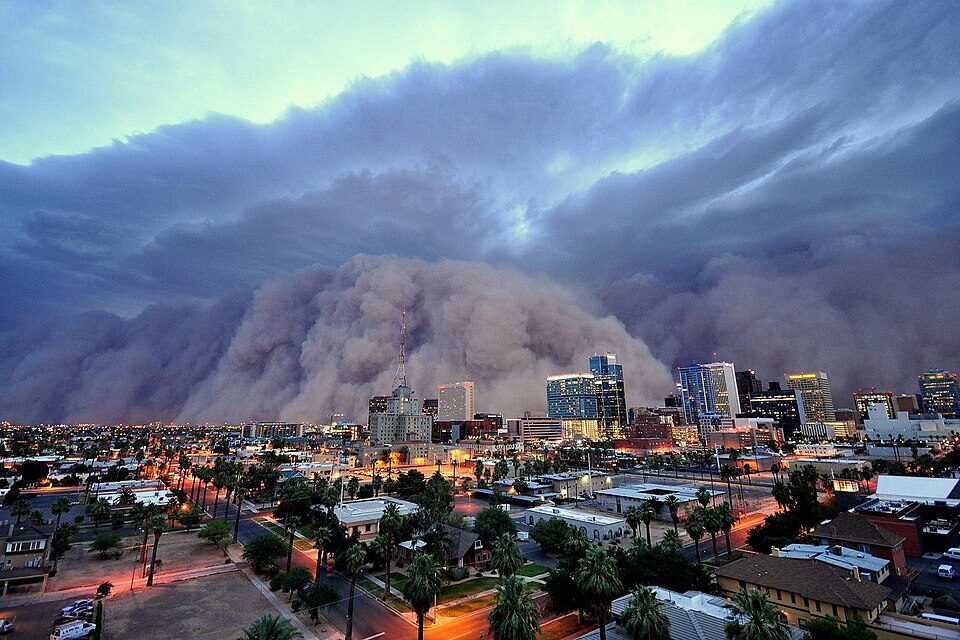
Phoenix, Arizona, is a desert city that experiences an average of 7.6 inches of rain annually. Its climate is characterized by hot summers and mild winters, with the majority of rainfall occurring during the monsoon season. Recent years have seen a decline in monsoon activity, leading to prolonged dry spells and increased temperatures.
In 2024, Phoenix experienced below-average rainfall, continuing a six-year trend of below-average precipitation. The city also had a record-breaking dry spell of 154 consecutive days without measurable rainfall as of January 2025. This drought, coupled with an abnormally dry winter, left much of the state at a level of extreme drought, and these conditions exacerbate drought concerns and increase the risk of wildfires and heat-related health issues.
5. El Paso, Texas
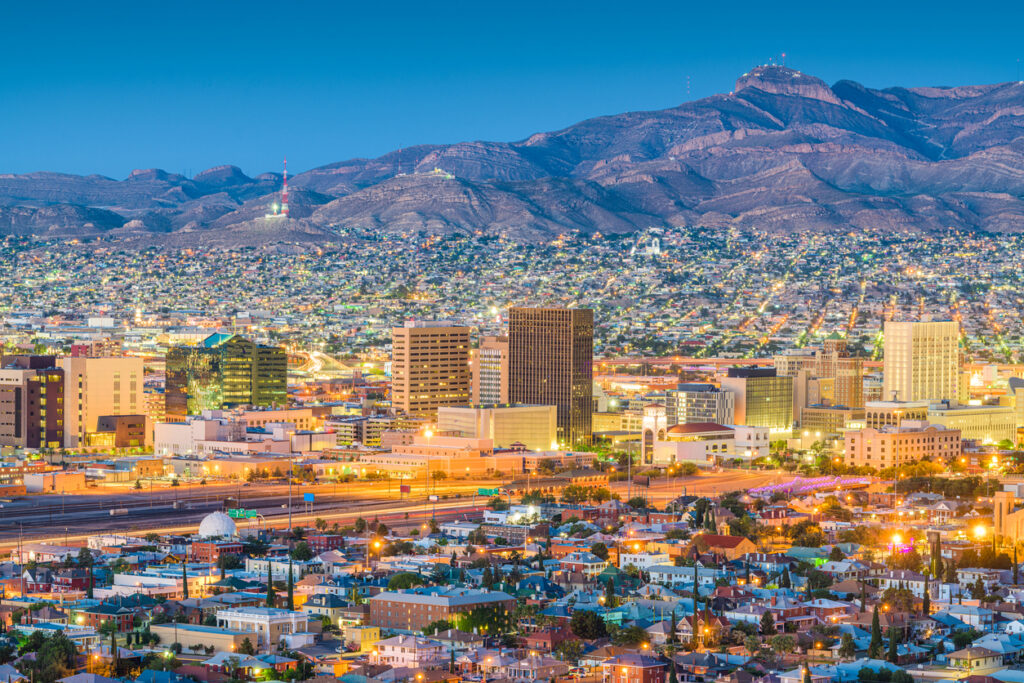
El Paso, located in the westernmost part of Texas, experiences a desert climate characterized by an average annual rainfall of approximately 9.7 inches. Its position within the Chihuahuan Desert contributes to its arid conditions. The city sees the majority of its precipitation during the summer monsoon season. However, recent years have seen significant variability in rainfall patterns.
For instance, in 2023, El Paso recorded only 0.5 inches of rain by late May, compared to the normal of 1.6 inches for that period. This deficit led to exceptional drought conditions, affecting 74% of El Paso County. Such fluctuations highlight the challenges of water resource management in arid regions and the importance of adaptive strategies to cope with climate variability.
6. Palmdale, California
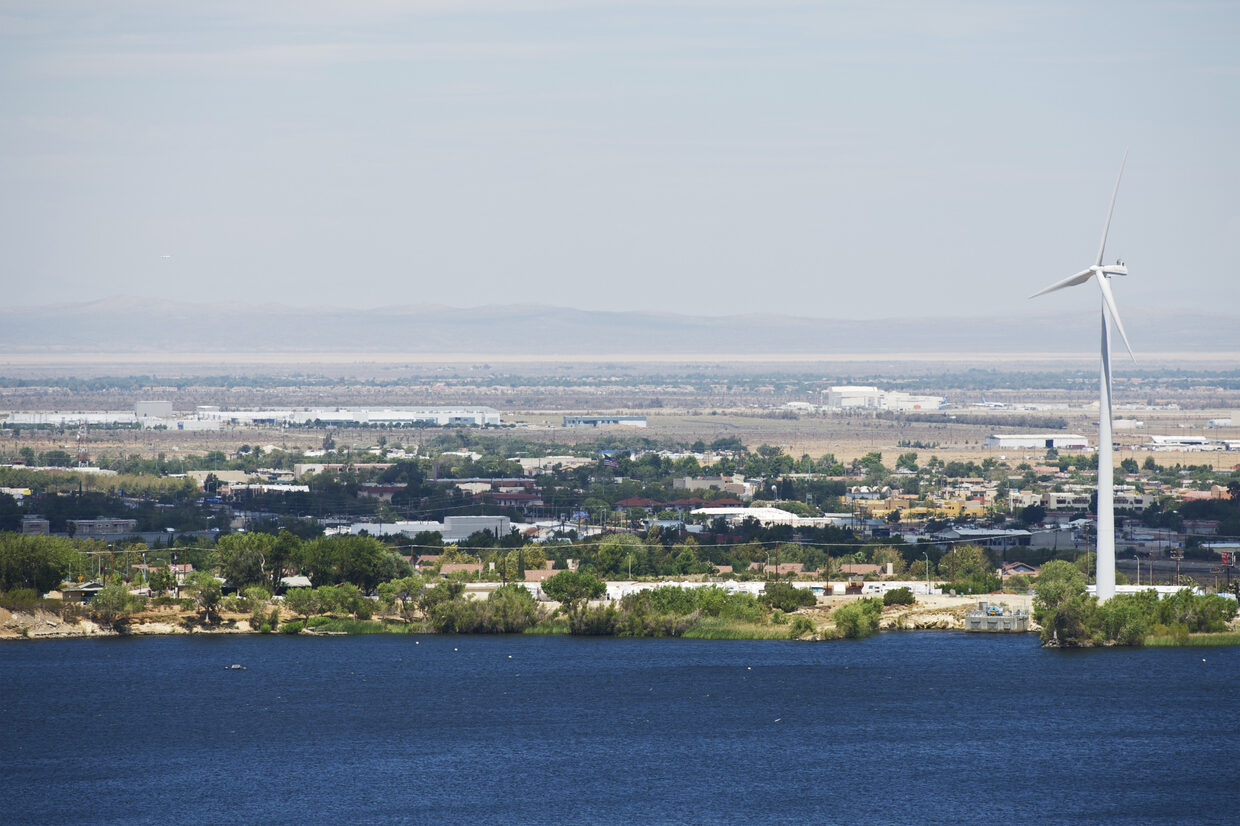
Palmdale’s high desert climate, located in the Antelope Valley of Southern California, is characterized by hot, dry summers and mild winters, with most rainfall occurring between October and April. The annual precipitation is approximately 7.4 inches. The rainless period typically extends for over six months, highlighting the aridity of the region. Temperatures in Palmdale range from lows of 36°F to highs of 95°F.
Despite the limited rainfall, Palmdale has developed strategies to manage its water resources effectively. Palmdale’s water management focuses on both groundwater and imported supplies, with strategies for conservation and sustainable practices. The city relies heavily on groundwater, supplementing it with imported water from the State Water Project (SWP).
7. Bakersfield, California
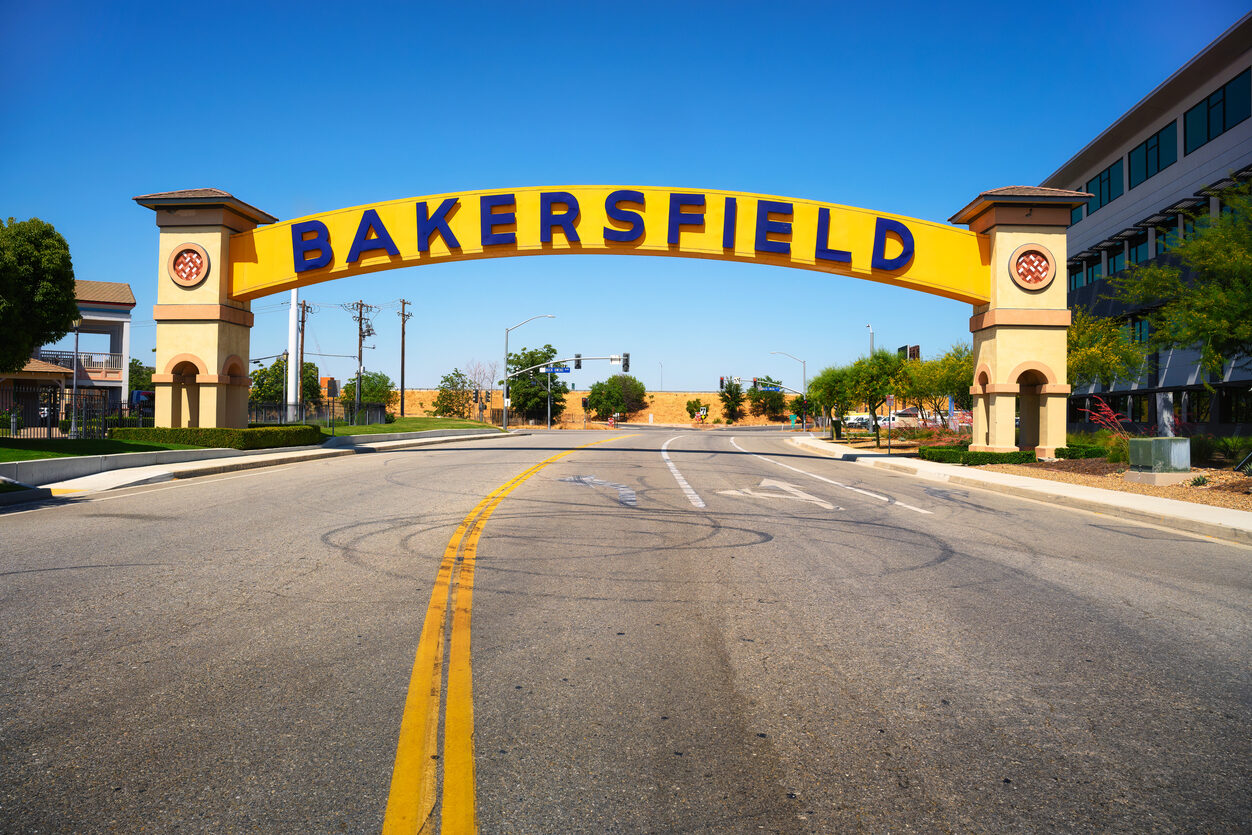
Bakersfield’s climate, situated at California’s Central Valley, is characterized by hot, dry summers and mild winters, with the majority of rainfall occurring from November through March. The city experiences an average annual rainfall of about 6.47 inches, which can pose challenges for agriculture, particularly regarding water availability for irrigation.
The arid conditions in Bakersfield have implications for both urban and agricultural water use. Efficient water management practices, including the adoption of drought-resistant crops and water-saving technologies, are essential for sustaining the region’s economy and ecology.
8. Reno, Nevada
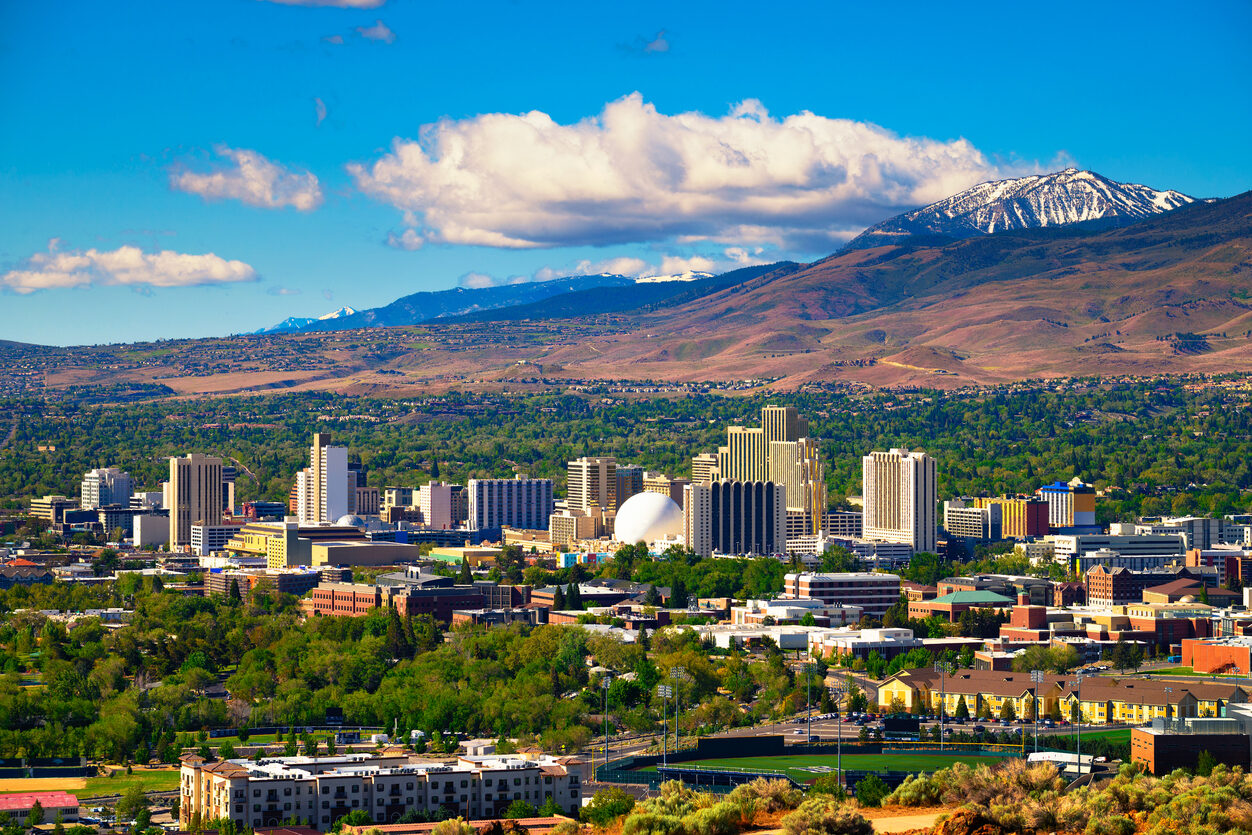
Reno’s location in the rain shadow of the Sierra Nevada mountains results in a high desert climate with hot, dry summers and cold, snowy winters, and an average annual precipitation of about 7.4 inches. Most of Reno’s precipitation occurs during the cooler months, with the Sierra Nevada acting as a barrier that reduces moisture from reaching the city according to weather reports.
The aridity of Reno, Nevada, significantly impacts water resource management and urban planning. To adapt to the climate, the city has implemented measures to promote water conservation and sustainability. This includes utilizing urban water supply infrastructure, such as surface water diversions and wells, as well as implementing policies and programs to reduce water consumption in both residential and commercial sectors.
9. Grand Junction, Colorado
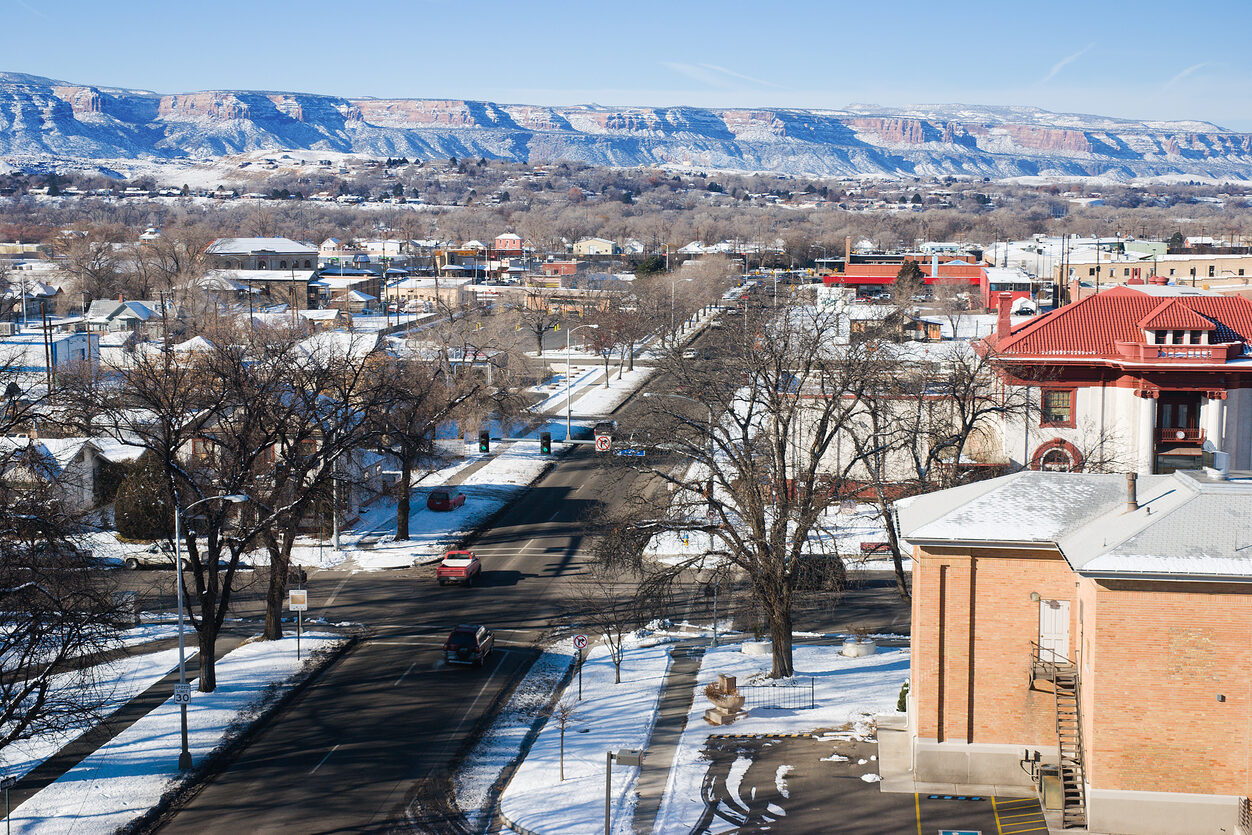
Grand Junction, Colorado, is indeed characterized by a semi-arid climate, with an average annual precipitation of about 9.4 inches. Its position within the high desert lands of Western Colorado contributes to its dry conditions, and the majority of rainfall occurs during the cooler month. The city’s climate significantly impacts water resource management and urban planning, leading to the development of plans and programs to address these challenges.
10. Albuquerque, New Mexico

Albuquerque’s climate is characterized by hot, dry summers and mild winters, with the majority of its annual precipitation occurring during the summer monsoon season. The city’s average annual precipitation is about 9.45 inches. While Albuquerque experiences periods of dry weather, the monsoon season, which typically lasts from June 15th to September 30th, brings in significant rainfall. According to weather reports, in 2018, for example, the city received a total of 8.72 inches of precipitation, slightly below the 30-year normal of 9.45 inches. The variability in precipitation poses challenges for water resource management and urban planning.
Wettest Cities in the U.S. (From Least to Most Rainfall)
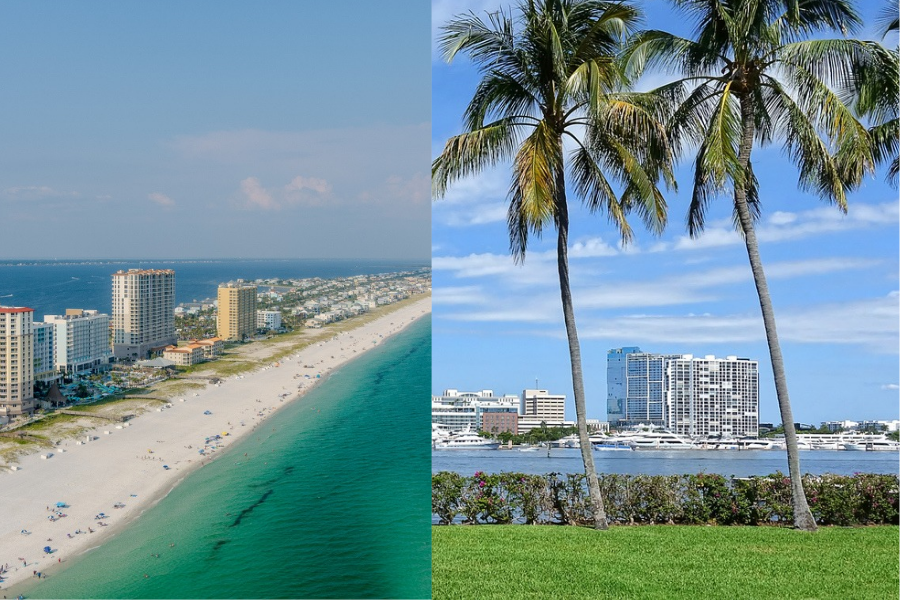
The United States is home to a diverse range of climates, from arid deserts to lush rainforests. When it comes to rainfall, some cities stand out as the wettest in the country. Here’s a look at the top cities in the U.S. that receive the most rainfall, listed from least to most.
1. Lake Charles, Louisiana
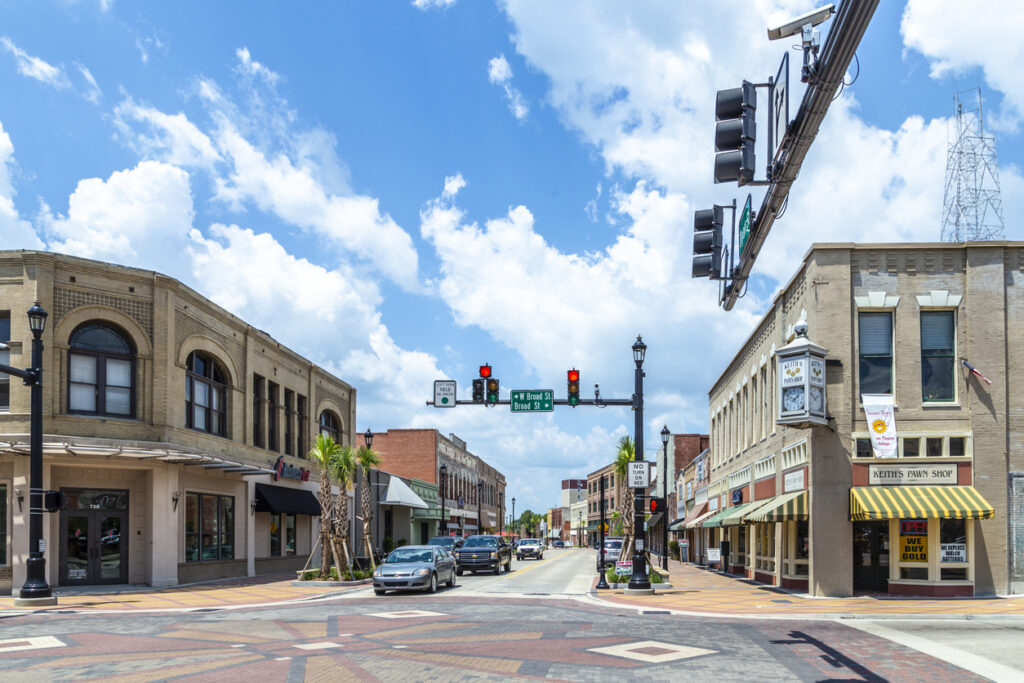
Lake Charles, Louisiana, receives an average of 57.5 inches of precipitation annually, according to World Climate. This is due to its humid subtropical climate, influenced by its proximity to the Gulf of Mexico, which results in hot, humid summers and mild winters. The average high temperature in Lake Charles is 78.1°F (25.6°C), and the average low is 59.1°F (15.1°C). Rainfall is fairly evenly distributed throughout the year, with a slight peak during the summer months. The abundant rainfall supports lush vegetation and diverse ecosystems in the region. However, the high humidity and frequent rain also pose challenges, such as increased risk of flooding and the need for effective water management systems.
2. Tallahassee, Florida
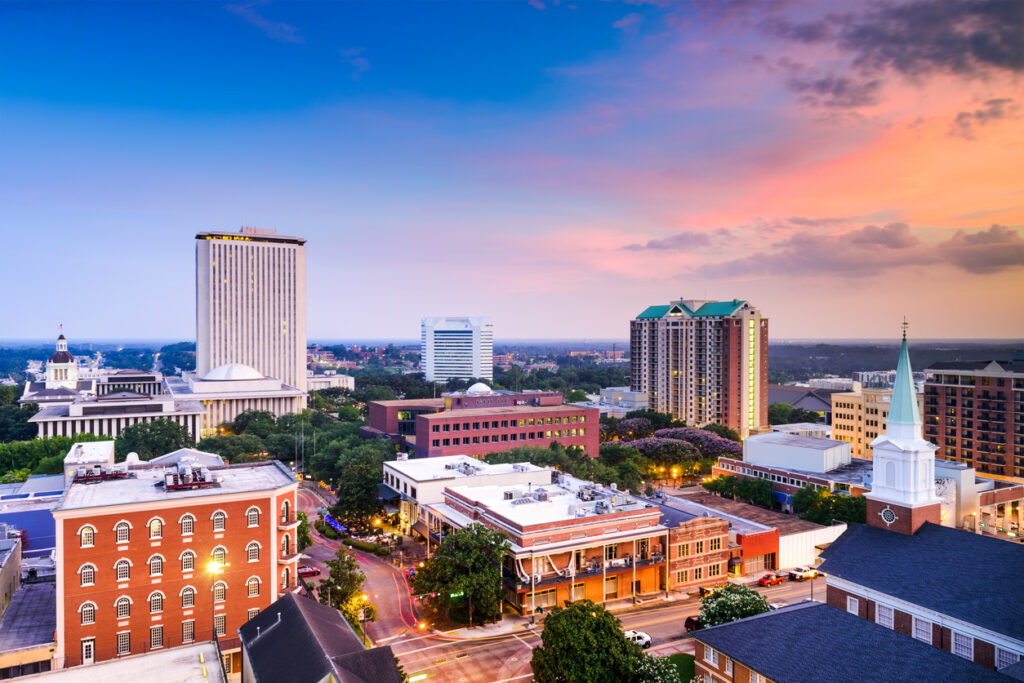
Tallahassee’s climate is characterized as a humid subtropical, with hot, humid summers and mild winters. The city experiences an average of about 59.2 inches of rain per year, with the summer months being particularly wet due to afternoon thunderstorms and tropical systems. According to World Climate, the average high temperature is 79.5 °F, and the average low is 55.7 °F. The consistent rainfall contributes to the region’s rich biodiversity and supports its extensive forested areas. However, the heavy rains also necessitate robust infrastructure to manage stormwater and mitigate flooding risks.
3. Baton Rouge, Louisiana
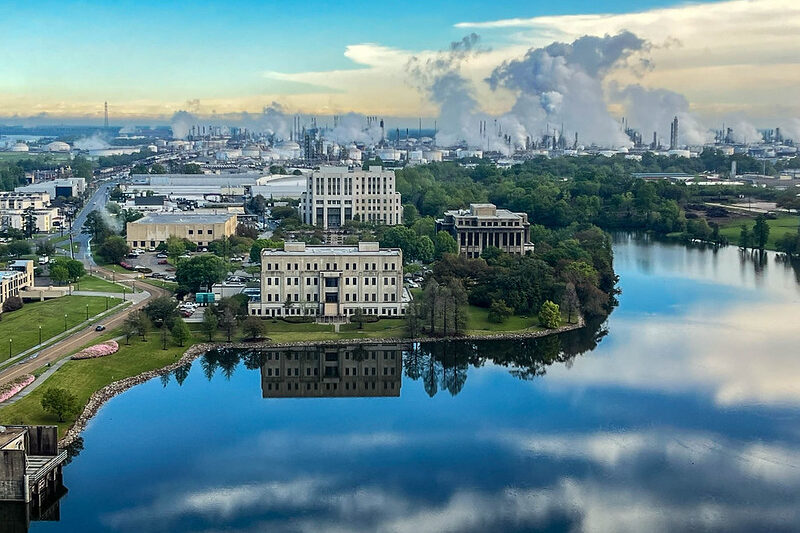
Baton Rouge experiences an average annual precipitation of approximately 60.65 inches, a result of its humid subtropical climate. Rainfall is distributed fairly evenly throughout the year, with a slight increase during the summer months. This consistent rainfall supports the region’s lush vegetation and contributes to its vibrant ecosystem. The city’s weather patterns are influenced by its proximity to the Gulf of Mexico, which brings moist air masses that often result in precipitation. While the rainfall supports agriculture and maintains the natural beauty of the area, it also necessitates robust infrastructure to manage stormwater and mitigate flooding risks.
4. Miami, Florida
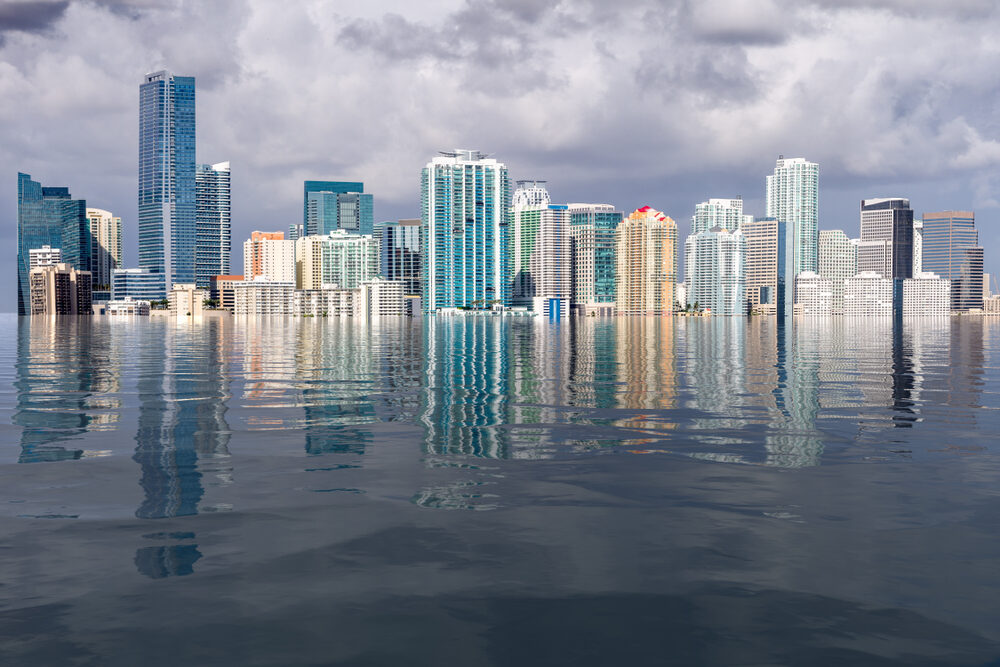
Miami’s climate is characterized by a distinct wet season from May to October, with approximately 61.9 inches of annual precipitation. This period is marked by frequent afternoon thunderstorms and occasional tropical systems, according to the National Weather Service. The majority of the annual rainfall occurs during this wet season, with a transition period at the beginning and end lasting two weeks or more.
The abundant rainfall contributes to Miami’s lush landscapes and diverse ecosystems. However, the city’s low elevation and flat topography make it particularly susceptible to flooding, especially during heavy rain events.
5. Lafayette, Louisiana

Lafayette, Louisiana experiences a humid subtropical climate characterized by an average annual precipitation of around 60.5 inches. This rainfall is generally distributed evenly throughout the year, with a slight increase during the summer months. The consistent rainfall supports the region’s diverse ecosystems and agricultural activities.
Lafayette’s location near the Gulf of Mexico significantly impacts its weather. The Gulf of Mexico is a major source of moisture-laden air masses, which can lead to frequent precipitation, especially during the summer months. This moisture also contributes to high humidity levels in the region. While the rainfall supports the local economy and natural beauty, it also necessitates effective stormwater management systems to prevent flooding and protect infrastructure.
6. West Palm Beach, Florida
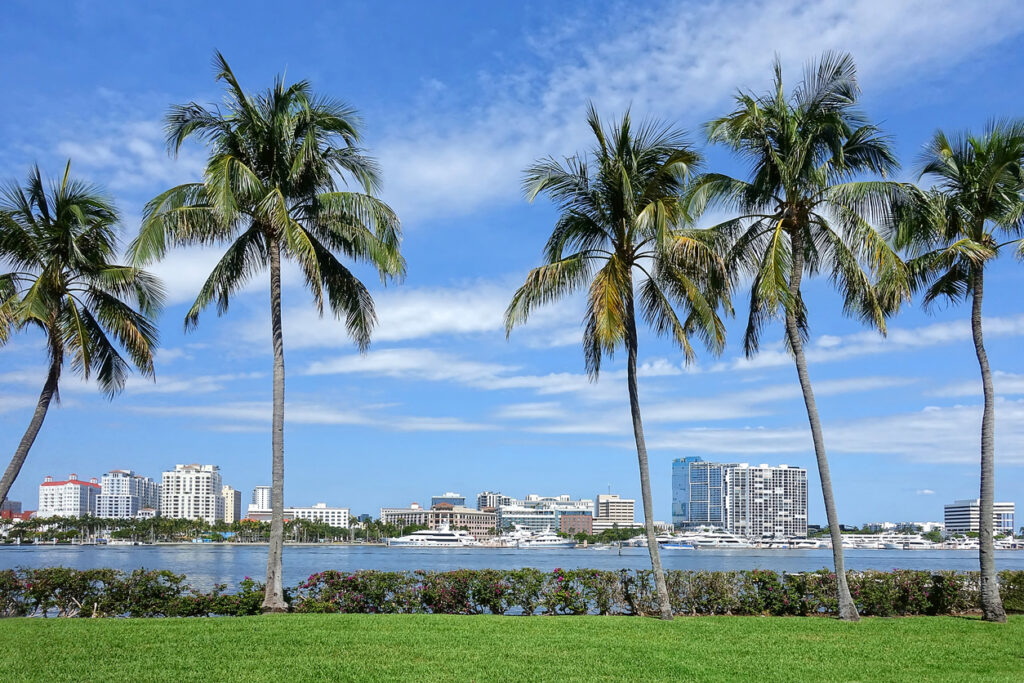
West Palm Beach experiences a tropical rainforest climate with a distinct wet season from May to October, receiving an average annual precipitation of about 62.33 inches. This period is characterized by frequent afternoon thunderstorms and occasional tropical systems. The majority of the city’s annual rainfall occurs during this wet season.
The abundant rainfall contributes to the city’s lush vegetation and vibrant landscapes. However, the combination of high rainfall and flat terrain increases the risk of flooding, necessitating robust infrastructure and effective water management strategies.
7. New Orleans, Louisiana
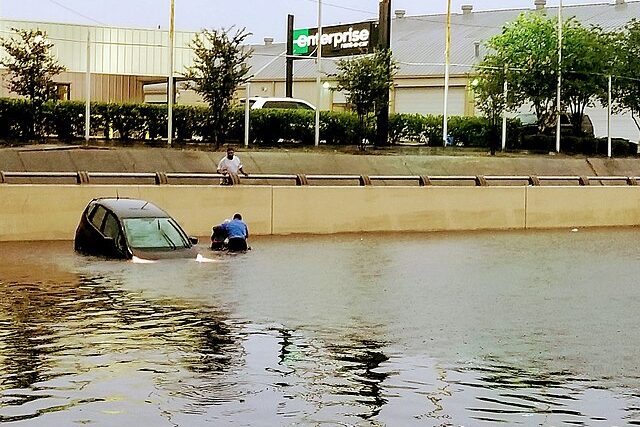
New Orleans receives an average of approximately 63.35 inches of rain annually. The city’s humid subtropical climate leads to rainfall that’s relatively consistent throughout the year, with a slight increase during the summer months. This consistent rainfall is crucial for the area’s lush vegetation and ecosystem.
The city’s weather patterns are influenced by its proximity to the Gulf of Mexico, which brings moist air masses that often result in precipitation. While the rainfall supports agriculture and maintains the natural beauty of the area, it also necessitates robust infrastructure to manage stormwater and mitigate flooding risks.
8. Pensacola, Florida
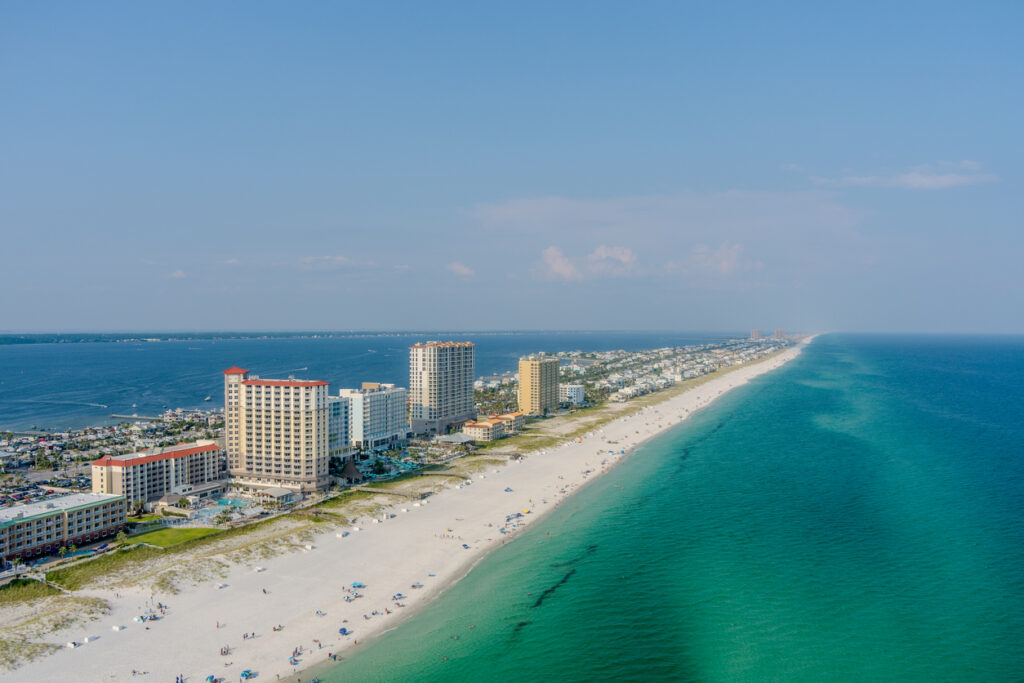
Pensacola, Florida, experiences a humid subtropical climate characterized by hot, humid summers and mild winters, with average annual precipitation around 65.27 inches. The summer months, particularly June, July, and August, are wetter than other months, often due to afternoon thunderstorms and tropical systems.
The consistent rainfall contributes to the region’s rich biodiversity and supports its extensive forested areas. However, the heavy rains also necessitate robust infrastructure to manage stormwater and mitigate flooding risks.
9. Mobile, Alabama
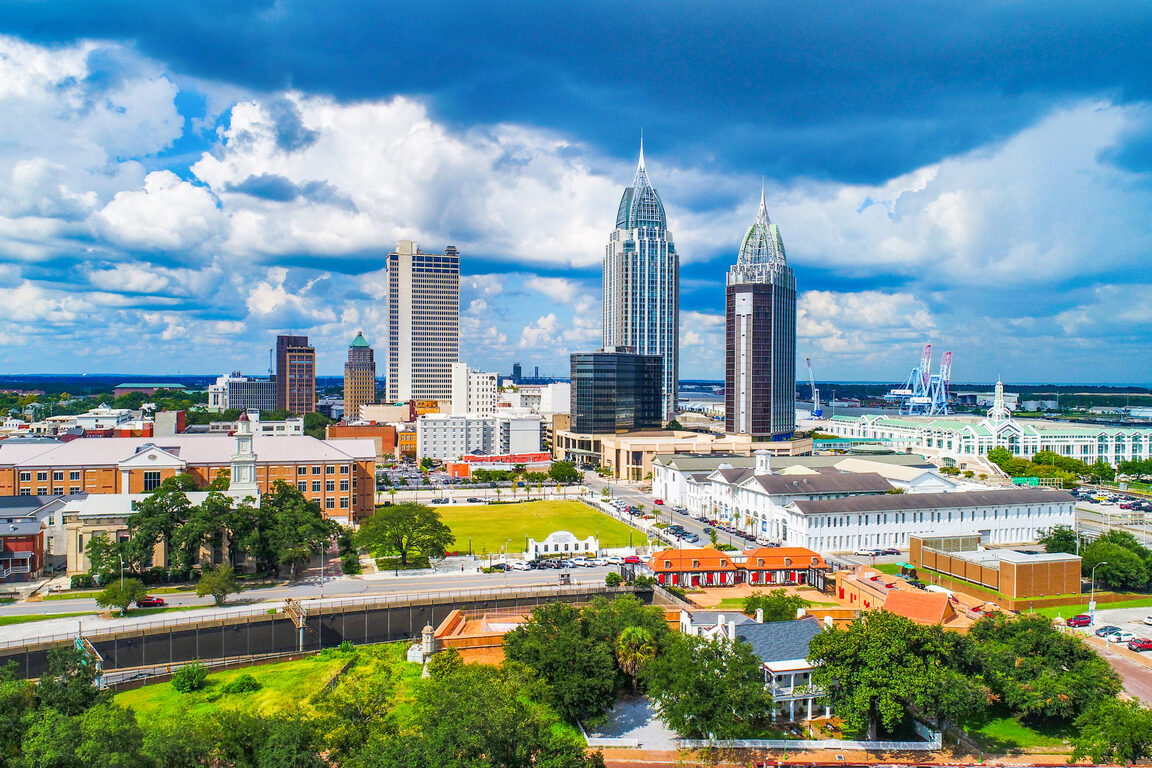
Mobile, Alabama experiences an average annual precipitation of approximately 66 inches, with rainfall generally evenly distributed throughout the year, according to the City of Mobile. The city’s humid subtropical climate, characterized by mild winters and hot, humid summers, contributes to a long growing season. This consistent rainfall supports the region’s lush vegetation and vibrant ecosystem.
The city’s weather patterns are influenced by its proximity to the Gulf of Mexico, which brings moist air masses that often result in precipitation. While the rainfall supports agriculture and maintains the natural beauty of the area, it also necessitates robust infrastructure to manage stormwater and mitigate flooding risks.
10. Hilo, Hawaii
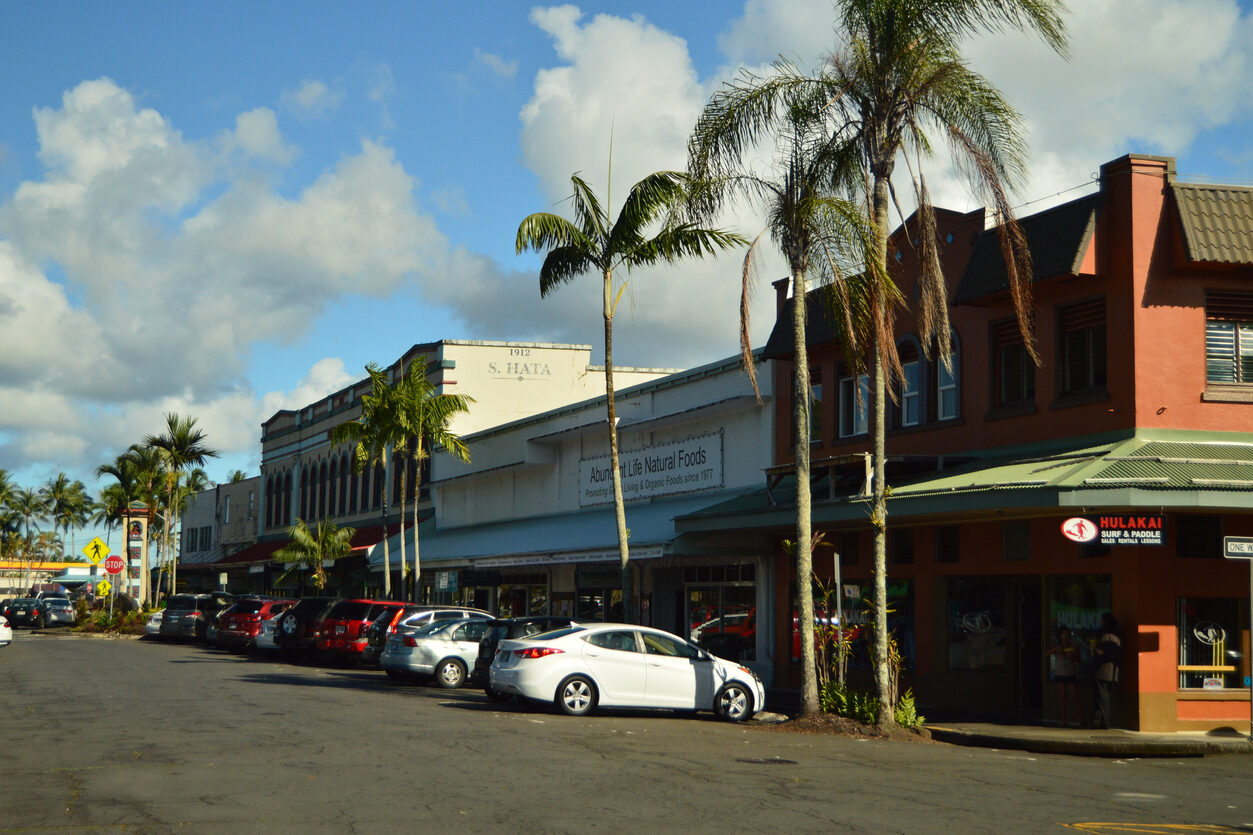
Hilo, Hawaii, holds the title for the wettest city in the United States, with an average annual precipitation of approximately 126.72 inches. The city’s tropical rainforest climate results in rainfall that is fairly evenly distributed throughout the year, with a slight increase during the winter months. This consistent rainfall supports the region’s lush vegetation and contributes to its vibrant ecosystem.
The city’s weather patterns are influenced by its location on the windward side of the Big Island, which brings moist air masses that often result in precipitation. While the rainfall supports agriculture and maintains the natural beauty of the area, it also necessitates robust infrastructure to manage stormwater and mitigate flooding risks.
This story 10 Wettest and 10 Driest Cities in the U.S., Ranked by Rainfall Extremes was first published on Daily FETCH


